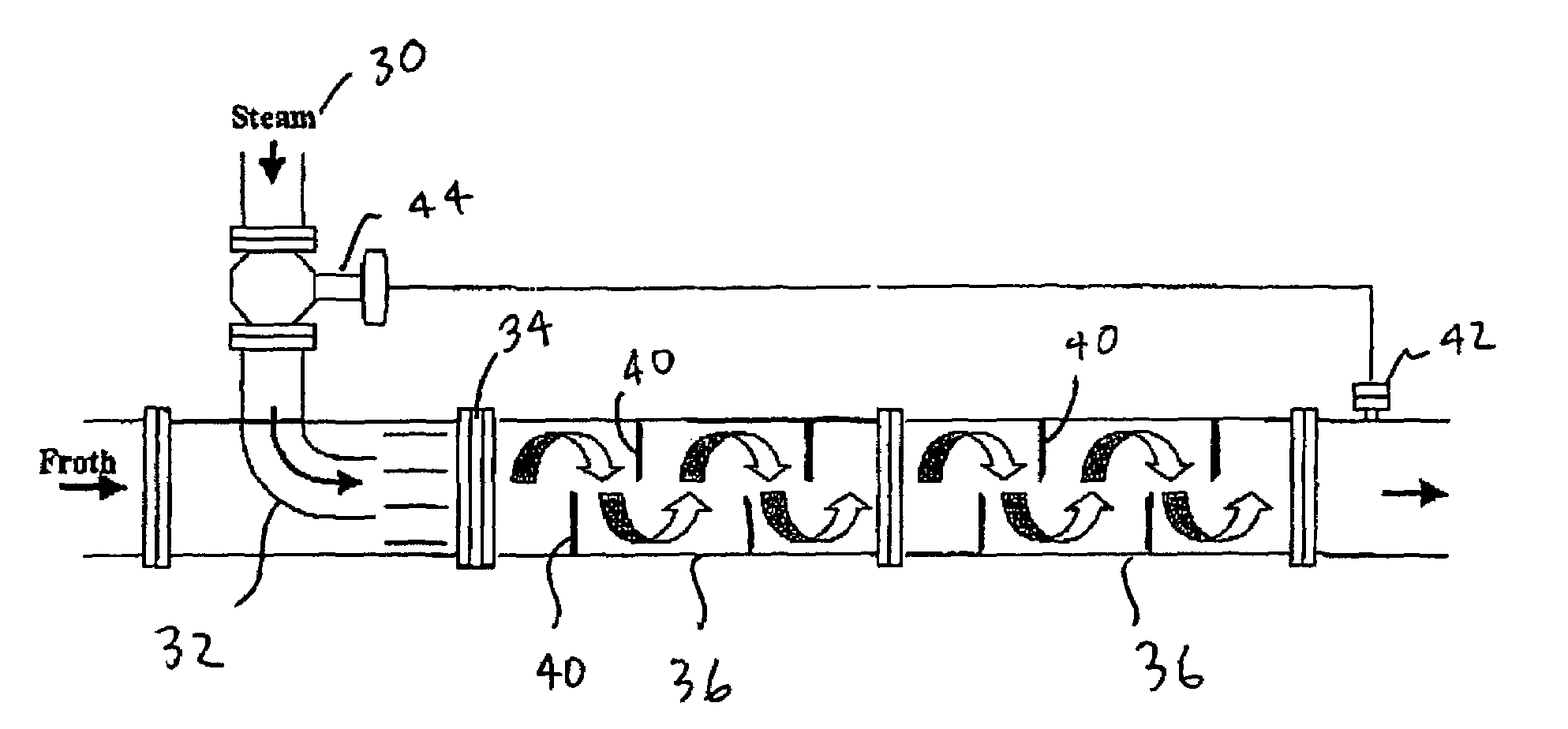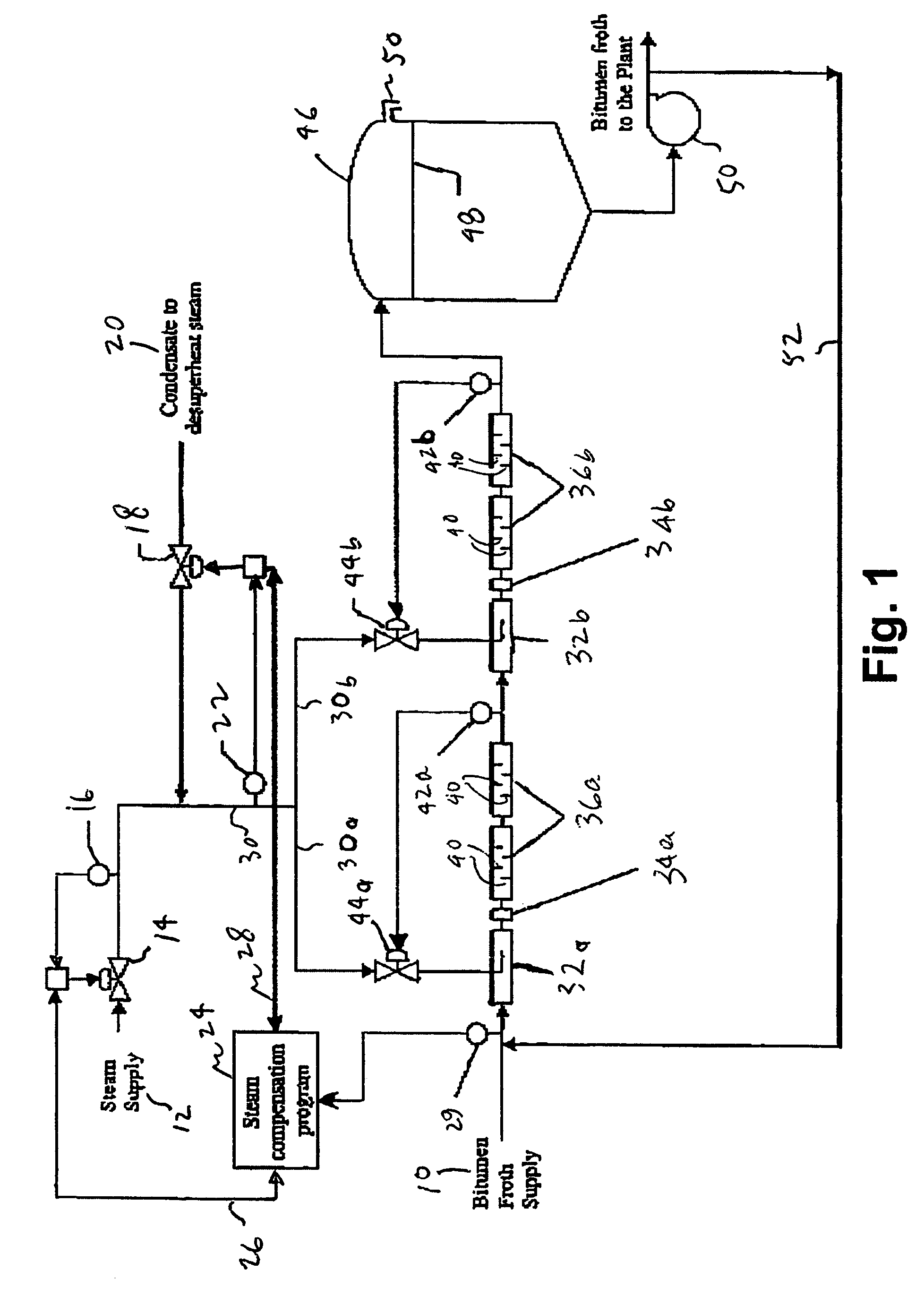Bituminous froth inline steam injection processing
a bitumen and inline steam technology, applied in the field of bitumen processing, can solve the problems of high waste of steam, difficult work of aerated bitumen froth at 150° f., viscosity and inability to readily accept heat, etc., to achieve the effect of improving contact area, facilitating froth deaeration, and superior efficiency and environmental friendliness
- Summary
- Abstract
- Description
- Claims
- Application Information
AI Technical Summary
Benefits of technology
Problems solved by technology
Method used
Image
Examples
Embodiment Construction
[0010]In accordance with a preferred embodiment of the process two inputs components, namely, bitumen froth and steam, are contacted to produce an output homogenous bitumen product heated to a temperature of 190° F. The input bitumen froth component 10 is supplied at about 150° F. In a pilot plant implementation the input bitumen froth component is supplied via a 28 inch pipeline at a rate of about 10,000 barrels per hour. The input steam component 12 is supplied as a superheated steam at about 500° F. and at 150 psi.
[0011]FIG. 1 shows a functional block diagram of a preferred embodiment of a bitumen froth heating apparatus arranged in accordance with the invention. The input steam component 12 is supplied to a pressure control valve 14 which reduces the pressure to a set point pressure, which is typically about 90 psi. A pressure transmitter 16 is provided to monitor the pressure of the steam downstream from the pressure control valve 14 to provide a closed loop control mechanism t...
PUM
| Property | Measurement | Unit |
|---|---|---|
| pressure | aaaaa | aaaaa |
| temperature | aaaaa | aaaaa |
| temperature | aaaaa | aaaaa |
Abstract
Description
Claims
Application Information
 Login to View More
Login to View More - R&D
- Intellectual Property
- Life Sciences
- Materials
- Tech Scout
- Unparalleled Data Quality
- Higher Quality Content
- 60% Fewer Hallucinations
Browse by: Latest US Patents, China's latest patents, Technical Efficacy Thesaurus, Application Domain, Technology Topic, Popular Technical Reports.
© 2025 PatSnap. All rights reserved.Legal|Privacy policy|Modern Slavery Act Transparency Statement|Sitemap|About US| Contact US: help@patsnap.com



